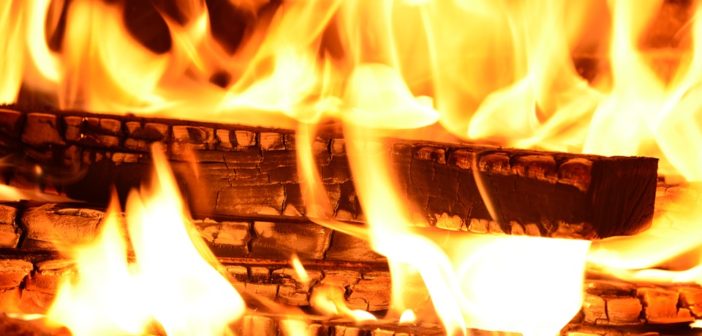The American Red Cross reports that fires that burn down homes increase during the fall and winter seasons. It makes sense for an increase to occur in the United States, as autumn and winter are when cool temperatures and holiday rituals involve an increased use of fire and things that can cause fires. Here are the worst fire hazards for your home in the fall.
1- Candle Fires
Candles come with instructions that are often ignored. This becomes obvious as the label the warnings are printed on also includes instructions to peel the paper label off before using the candle. Do you do that? Have you ever read the warnings and instructions on a candle you burn in your home? The number one thing is that burning candles should never be left unattended—not even for a minute. Your candles should be on a fireproof surface away from anything combustible from curtains to plastic to paper. Wicks should be trimmed before use to the manufacturer’s recommendations. Also, keep in mind that many votive and jar candles have a maximum advised burn time before they should be extinguished, letting the remaining wax cool to room temperature.
2- Furnace, Space Heater and Fireplace Fires
The fall season is the heating season in North America. Though Florida is warmer than Maine in the fall, the residents of each begin to feel their version of winter’s chill descending upon them. This is when the use of furnaces, space heaters and fireplaces replace air conditioners and fans. Appliances that output heat are the most dangerous appliances in your home as they produce temperatures or direct flames that can catch your house on fire if not maintained or used properly. Get your furnace and any fireplace or wood burner inspected, and get out the manuals for your electric or fossil fuel space heaters for a refresher on how to safely use them.
3- Turkey Fryer Fires
How can a guy show off his culinary skills any more than frying an entire turkey at one time? These devices are sold in stores around the Thanksgiving holiday, and they are a lure because it is a different way of preparing the main course of the traditional holiday meal. The problem is that you are mixing a lightweight aluminum appliance with over a gallon of super-heated vegetable oil using fire from a fuel that is flowing through a rubber hose connected to a potential propane bomb. Another problem is the close proximity to combustibles where the appliances are often used. They should not be used anywhere near an occupied structure, and they should be placed on a solid level surface with an emphasis on level. Overheated oil can cause a violent explosive reaction when the moisture of the turkey hits it. The best recommendation is to bake your turkey and forego the turkey fryer fire hazard.
4- Holiday Lighting Fires
If you read the instructions for holiday lights, you will see the word “temporary” used. No decorative holiday lights are meant for permanent installation. The materials are not designed for daily year-round use. The other problem comes in with repeated annual temporary use as these products wear out and become hazardous. To further complicate matters, many decorative holiday lighting displays include combustible materials. Damaged insulation on wires and broken bulbs can lead to electrical shorts that include sparks, which can ignite a fire. Connecting too many light strands together can lead to overheating that can cause fires. One more issue is cheap imported decorations that are electrically powered but not UL tested for safety. Read the instructions and the labels, and do not use damaged holiday lighting products or products that are not UL listed.
5- Stovetop and Oven Fires
The fall season is often when people fall off the diet wagon when they are unable to resist everything from turkey with all the fixings to pumpkin pie and Christmas cookies. All of these delectable treats need to be cooked or baked, and the distractions of anything from a holiday visitor to answering the door to sign for another online gift that was purchased can lead to stove top or oven fires. Simply put, your kitchen should never be unattended when you have something cooking on the stove or in the oven. Crockpot use implies that you can start them in the morning and return home to a tasty meal at the end of your work day, but there is so much that can go wrong with an appliance that creates heat hot enough to catch something on fire. Keep the kids and pets out of the kitchen when you are cooking, and always have an adult keep an eye on things when you need to step away.
Your home does not have to join the statistics of the other roughly 71,600 house fires per year. Read and follow manufacturer instructions and warnings for any appliance or product that produces heat or open flame. Then, add in a liberal dose of common sense, always erring on the side of caution. Keep in mind that no product is inherently safe, and this applies more than double to any product that produces heat.




